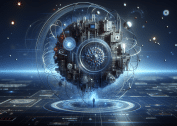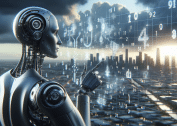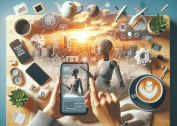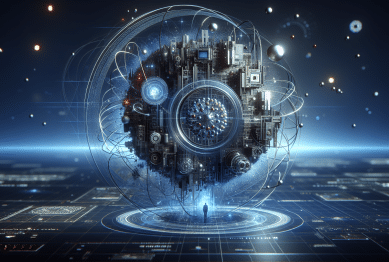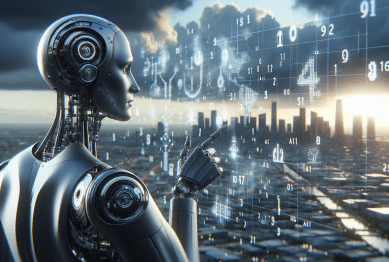Artificial intelligence tools are changing how tasks get done, boosting both speed and efficiency. Discover how these technologies transform the workplace, enable smarter workflows, and open new possibilities for collaboration and productivity—all backed by real-world examples and trusted sources.
Modern AI Tools Are Shaping Today’s Workflows
Artificial intelligence tools are becoming foundational for business and knowledge workers alike. Tools powered by machine learning and natural language processing now automate repetitive tasks and provide recommendations that speed up decisions. For example, scheduling meetings, sorting emails, and even auto-generating reports have become routine. This integration frees up time for teams and promotes a focus on core creative work, not just mundane tasks. As organizations adopt digital transformation strategies, AI-driven workflow automation platforms become more prevalent, offering not just efficiency but a shift in work culture.
By blending AI with cloud computing, businesses create remote-ready environments where anyone can collaborate globally. Real-time co-editing, voice recognition, and intelligent task assignments allow teams to complete projects with greater agility. Collaboration platforms with built-in smart assistants, such as Microsoft 365 Copilot or Google Workspace, constantly improve their features through user data. These intelligent solutions adapt to enterprise-specific needs, continually learning and evolving without manual intervention. The result: workflows that adapt to you, not the other way around.
It’s not only large organizations benefiting from AI-powered tools. Freelancers and small teams use apps that transcribe meetings, summarize long documents, or suggest relevant reference materials. AI-driven project management tools prioritize deadlines and allocate resources dynamically, while marketplace platforms recommend the best matches for gig workers. For those seeking streamlined efficiency, artificial intelligence no longer feels futuristic—it’s embedded in daily operations, becoming essential for productivity and organization at any scale.
AI-Powered Productivity: Smarter, Not Busier
Productivity software is undergoing a quiet revolution thanks to AI. Smart assistants handle meeting notes, action items, and reminders automatically. Some tools now analyze how time is spent on projects, offering personalized suggestions to reduce distractions or improve your workflow balance. Employees and students alike use AI writing aids to check grammar, generate summaries, or brainstorm ideas. These tools don’t just automate—they augment human abilities, promoting smarter work so users achieve more by focusing on tasks that truly matter.
One practical application is the use of AI to analyze large data sets for trend discovery. Data analytics platforms, powered by machine intelligence, identify outliers and meaningful patterns far faster than manual methods. In marketing, AI suggests optimal content timing and messaging; in finance, it flags unusual spending. Even customer support is faster and more accurate as chatbots resolve common questions instantly, freeing up staff to tackle complex issues. This surge in automated assistance means fewer bottlenecks and improved productivity for entire organizations.
Personalized recommendations are another productivity booster. AI learns your habits and workflows over time—suggesting when to take breaks, reviewing your calendar to avoid overload, or highlighting deadlines that need attention. Over time, this adaptive approach means less burnout, smoother project delivery, and a healthier work-life dynamic. With ongoing advances, new forms of productivity support continue to emerge, making AI-driven solutions essential companions—not replacements—for knowledge workers everywhere.
Collaboration Gets Easier With Smart Platforms
Collaboration is essential for modern projects, and AI optimizes how teams interact and share ideas. Intelligent platforms use natural language processing to transcribe discussions, summarize key points, and assign tasks automatically. This not only saves time but makes meetings accessible for all, including those who missed the live session. Interactive dashboards powered by real-time data keep everyone on the same page, while automated notifications remind team members of their responsibilities. AI bridges distance and language barriers, fostering a collaborative environment where input flows easily.
Language translation tools within collaborative workspaces extend communication capabilities worldwide. Multinational organizations rely on simultaneous translation to include global colleagues in every discussion. Speech-to-text tools and sentiment analysis further refine the process by highlighting urgent requests and surfacing unresolved concerns. With these capabilities, distributed teams can work together as if they are in the same room, minimizing miscommunications and maximizing synergy. AI does not replace human nuance but strengthens it with clarity and speed.
AI also supports creative brainstorming and decision-making. Whiteboard applications now suggest topics, cluster ideas, and highlight connections that might be missed by humans alone. By presenting alternative viewpoints and integrating reference material on demand, these systems empower more inclusive, creative group work. As a result, strategic decisions benefit from both human intuition and machine insight, driving innovation and better project outcomes in competitive fields.
Managing Digital Security in the AI Era
Security is a top concern as AI systems become more pervasive. Artificial intelligence enhances cybersecurity with threat detection and automated response tools. Machine learning algorithms scan background data traffic, identifying unusual behavior patterns and possible breaches faster than legacy systems. As a result, companies can respond to threats at machine speed, not human speed, limiting the impact of incidents. Organizations balancing remote work and flexible schedules value AI security monitoring to protect sensitive data across devices and locations.
Privacy and data protection shape how AI is used in professional settings. Regulations encourage transparency in AI-driven tools—requiring users to understand what information is collected and how it’s analyzed. Modern platforms often implement end-to-end encryption and anonymization to ensure employee data remains confidential. Awareness and training on security best practices help everyone in the workplace use new technology responsibly. Effective security is a shared responsibility, and AI plays an increasingly active role in safeguarding digital assets.
AI can also automate compliance monitoring, studying changing regulations and alerting business leaders to new rules. Automated reporting, risk analysis, and auditing features save teams time and reduce the risk of oversight. While automation accelerates compliance, human expertise remains important for interpreting findings and setting policy. The partnership between human decision-makers and AI surveillance tools means enterprises stay both secure and adaptable as rules shift and threats evolve.
The Future of Work With AI: Opportunities and Questions
As artificial intelligence expands, new career roles emerge and existing ones evolve. AI literacy is now a sought-after skill, with employers valuing the ability to collaborate with smart tools or manage AI-driven processes. Upskilling via digital courses or certifications keeps professionals relevant. Many organizations invest in tailored training programs to ensure their teams can harness the full value of AI platforms, turning potential apprehension into empowerment.
Ethical considerations follow the rapid adoption of AI in the workplace. Responsible AI use means monitoring for bias, maintaining transparency, and keeping users informed about automated decision-making. Organizations must assess potential impacts—both risks and rewards—when integrating intelligent systems. That’s why ongoing dialogue about responsible innovation is crucial, bridging tech capability with societal needs and fair outcomes.
Future developments in AI will likely reshape industries further, as automation and machine learning become even more advanced. Flexible work setups, from hybrid offices to entirely remote teams, benefit from ongoing advances in AI-powered collaboration software. The key will be balancing efficiency gains with genuine human connection and creativity—areas where machine intelligence still complements, rather than replaces, the human touch. As the future unfolds, curiosity and adaptability remain the best guides for anyone seeking opportunity in an AI-enhanced world.
Navigating AI Tool Choices: What Matters Most
Selecting the right AI tools depends on your goals and workflow needs. Start with tools that integrate well into your existing tech stack and are supported by strong user communities. Consider platforms that emphasize transparency, offer clear explanations of their processes, and provide actionable insights that improve over time. Look for solutions that allow customizable automation, supporting your unique business requirements with flexible options, not just generic templates.
Cost and scalability should be major factors, especially for growing businesses. Many advanced AI platforms offer tiered pricing models—making it possible to start small and expand features as needs change. Consider vendor reputation, data privacy policies, and the frequency of updates. Pilot programs or limited trials can help teams assess ease of use and effectiveness. Feedback from real users provides practical guidance for long-term investments, ensuring smooth adoption and minimal disruption.
Finally, continuous learning is key. As AI technology evolves, so does its application in daily workflows. Keep up with new features and best practices through online courses, webinars, or tutorials offered by reputable tech organizations. Staying curious and open to innovation helps maximize the benefits modern AI tools offer to every professional setting. With the right approach, adapting to AI-driven change becomes not just manageable but truly rewarding.
References
1. U.S. National Institute of Standards and Technology. (n.d.). Artificial Intelligence. Retrieved from https://www.nist.gov/artificial-intelligence
2. Future of Humanity Institute, University of Oxford. (n.d.). The Malicious Use of Artificial Intelligence. Retrieved from https://www.fhi.ox.ac.uk/
3. European Commission. (n.d.). Artificial Intelligence factsheet. Retrieved from https://digital-strategy.ec.europa.eu/en/policies/european-approach-artificial-intelligence
4. Harvard Business Review. (n.d.). Artificial Intelligence for the Real World. Retrieved from https://hbr.org/2018/01/artificial-intelligence-for-the-real-world
5. World Economic Forum. (n.d.). Jobs of Tomorrow: Mapping Opportunity in the New Economy. Retrieved from https://www.weforum.org/reports/jobs-of-tomorrow-mapping-opportunity-in-the-new-economy/
6. Stanford University. (n.d.). Artificial Intelligence Index Report. Retrieved from https://aiindex.stanford.edu/report/



